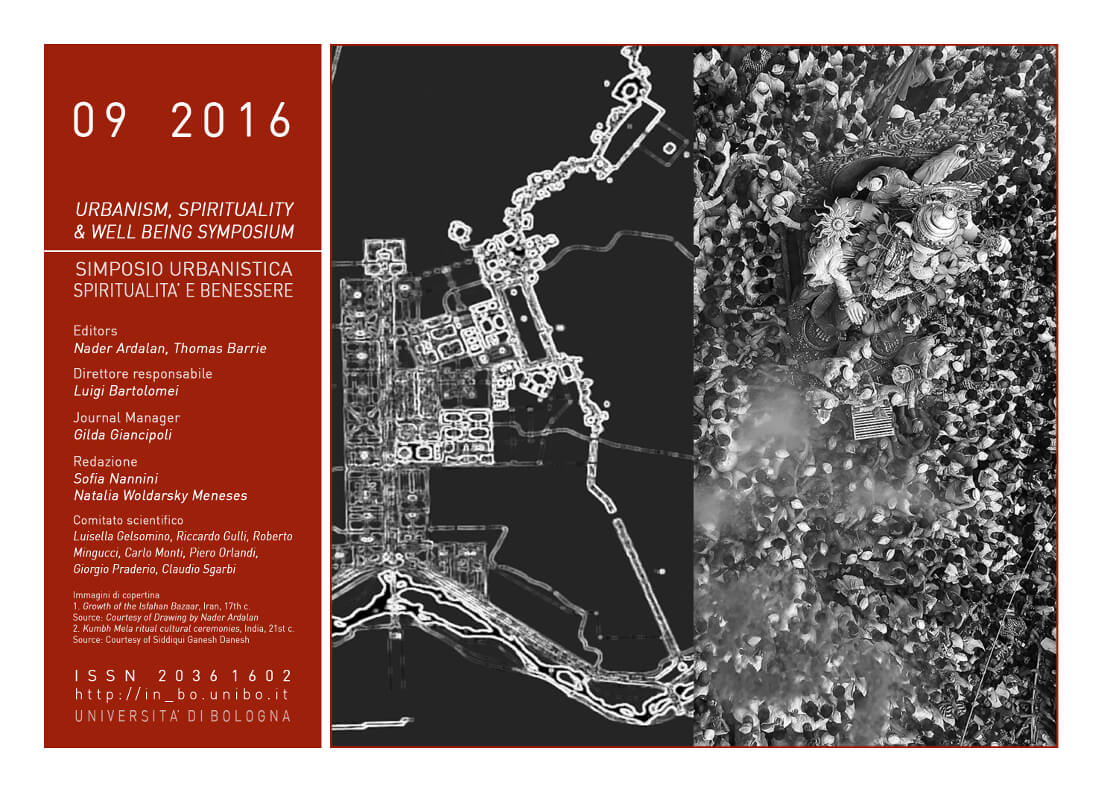Transitioning Natures: Robert Schuller’s Garden Grove Experiment
DOI:
https://doi.org/10.6092/issn.2036-1602/6310Keywords:
Human Territoriality, Sacred Geographies, Third Nature, Superordinary, Drive-in Church, Retailing Religion, Robert Schuller, Richard NeutraAbstract
Through the lens of Evangelist Reverend Robert H. Schuller’s Garden Grove drive-in walk-in church, this paper aims to exemplify how his architecture has transcended existing geographies that have long been anchored by the epistemology of what can be referred to as traditional “religious” architecture. This paper examines how Schuller instrumentalized broader imbrications of political contexts to change or manipulate the traditional religious subject. It also presents how Robert Schuller’s Garden Grove experiment reconceptualized “territory” as an evolving ideological dimension; not as a trajectory, or as transitory space, but as inhabitable third nature. My analysis challenges established readings of religious architecture as being interiorized manifestations. To do so, it poses the following questions: how does this meta-geographical dimension shed new light on questions of (traditional) architectural aesthetics in Protestant architecture? What spaces and politics does it produce? Does the third nature have a history of its own?References
Sloterdijk, Peter, and Wieland Hoban. In the World Interior of Capital : For a Philosophical Theory of Globalization. English edition. ed. 2014.
Plato, and C. J. Rowe. Phaedo. Cambridge Greek and Latin Classics. Cambridge England ; New York, NY, USA: Cambridge University Press, 1993.
Sack, Robert David. Human Territoriality : Its Theory and History. Cambridge Studies in Historical Geography. Cambridge Cambridgeshire ; New York: Cambridge University Press, 1986.
Brenner, Neil. Implosions/Explosions : Towards a Study of Planetary Urbanization. Berlin: JOVIS, 2014
Petrov, Antonio. Superordinary! Aesthetic and Material Transformations of Megachurch Architecture in the United States. Cambridge, MA: My Doctoral Dissertation at Harvard University, 2011.
Baudrillard, Jean. America. London ; New York: Verso, 1988.
Petrov, Antonio. “Superordinary: On the Problematique of the Ordinary “. MAS-Context Fall 2014, no. 23 (2014): 8-15.
Latour, Bruno. Politics of Nature : How to Bring the Sciences into Democracy. Cambridge, Mass. ; London: Harvard University Press, 2004.
Pinchbeck, Daniel. “Embracing the Archaic: Postmodern Culture and Psychedelic Initiation.” In Psychedelic : Optical and Visionary Art since the 1960s, edited by David S. Rubin, 139 p. San Antonio, TX. Cambridge, Mass.: San Antonio Museum of Art ; In association with the MIT Press, 2010.
Hollein, Hans. “Everything Is Architecture.” Discourse on Practice in Architecture Reader (1968): 459461.
Schuller, Robert Harold. Your Church Has Real Possibilities. Glendale, Calif.: G/L Regal Books, 1974.
Cohen, Lizabeth. A Consumers’ Republic : The Politics of Mass Consumption in Postwar America. 1st Vintage Books ed. New York: Vintage Books, 2004.
Lavin, Sylvia. “Drive-through Window.” In Form Follows Libido : Architecture and Richard Neutra in a Psychoanalytic Culture, 119-30. Cambridge, Mass.: MIT Press, 2004.
Glickman, Lawrence B. Consumer Society in American History: A Reader. Ithaca, NY: Cornell University Press, 1999.
Time-Magazine (1975) http://www.time.com/time/magazine/article/0,9171,913788,00.html.]
Jarzombek, Mark. “The Cunning of Architecture’s Reason.” Footprint Autumn 2007 (2007): 31-46.
Hegel, Georg Wilhelm Friedrich. Aesthetics : Lectures on Fine Art. 2 vols. Oxford ; New York: Clarendon Press, 1998.
Steiner, Uwe. Walter Benjamin : An Introduction to His Work and Thought. Chicago ; London: the University of Chicago Press, 2010.
Smith, James K. A. Who’s Afraid of Postmodernism? : Taking Derrida, Lyotard, and Foucault to Church. Church and Postmodern Culture. Grand Rapids, Mich.: Baker Academic, 2006.
Smith, Matthew Wilson. The Total Work of Art : From Bayreuth to Cyberspace. New York: Routledge, 2007.
Snodgrass, Klyne. Stories with Intent: A Comprehensive Guide to the Parables of Jesus. Grand Rapids, Mich.: William B. Eerdmans Pub. Co., 2008.
Leach, William. Land of Desire : Merchants, Power, and the Rise of a New American Culture. 1st ed. New York: Pantheon Books, 1993.
May, Elaine Tyler. “The Commodity Gap: Consumerism and the Modern Home.” In Consumer Society in American History : : A Reader, edited by Lawrence B. Glickman, 298-315. Ithaca, NY: Cornell University Press, 1999.
Lefebvre, Henri. The Production of Space. Oxford, OX, UK ; Cambridge, Mass., USA: Blackwell, 1991.
Downloads
Published
How to Cite
Issue
Section
License
Copyright (c) 2016 Antonio Petrov
Copyrights and publishing rights of all the texts on this journal belong to the respective authors without restrictions.
This journal is licensed under a Creative Commons Attribution-NonCommercial 4.0 International License (full legal code).
See also our Open Access Policy.
Metadata
All the metadata of the published material is released in the public domain and may be used by anyone free of charge. This includes references.
Metadata — including references — may be re-used in any medium without prior permission for both not-for-profit and for-profit purposes. We kindly ask users to provide a link to the original metadata record.







